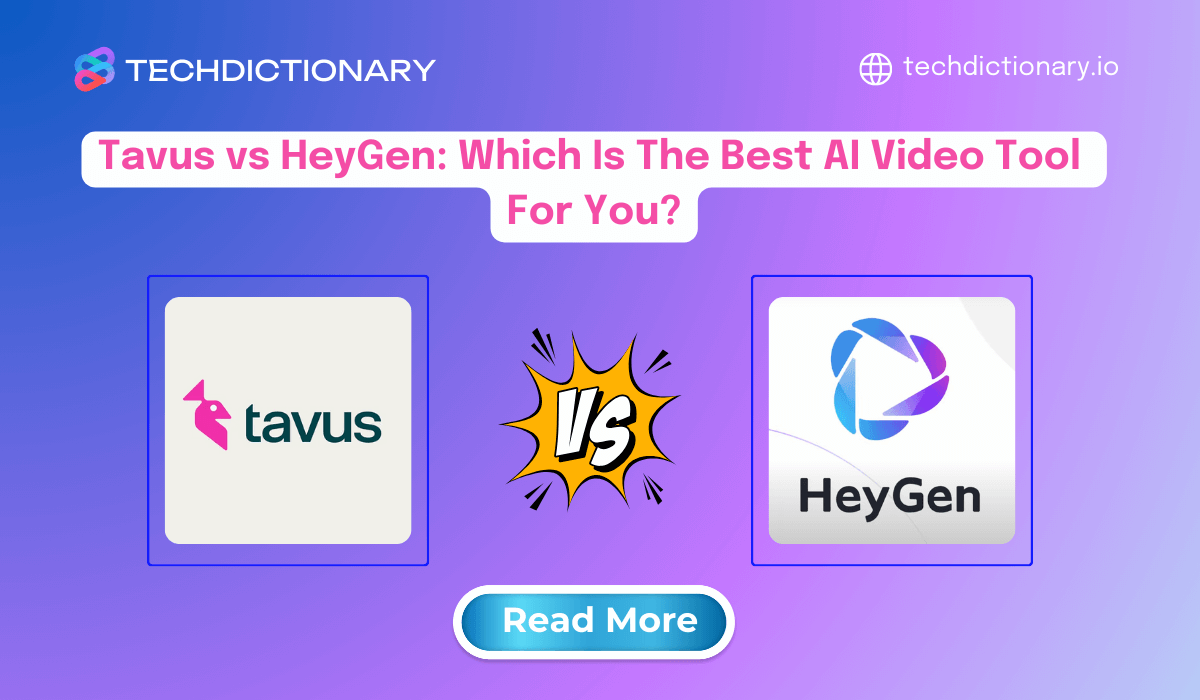
Tavus and HeyGen are two popular options for making personalized videos. However, are they offering the same features to users? What are the differences between them and which of them is the best solution for you? As you scroll through this article, we’re sure you’ll understand the most important aspects of each tool, helping you make a good decision. Are you ready for this discovery of Tavus vs HeyGen? Let’s get started!
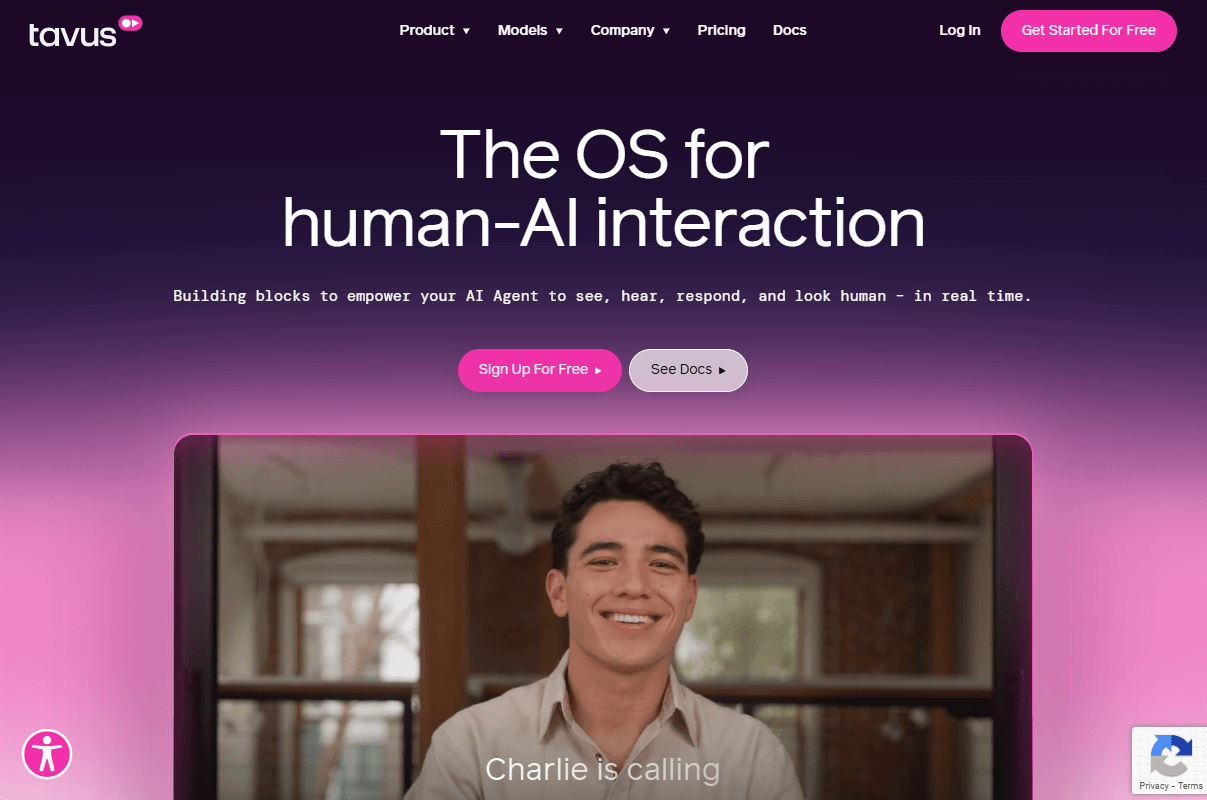
Tavus – A Reliable Platform for Video Generation
People who would love to create personaliz
ed videos with “digital twins” – highly realistic avatars can come to Tavus. This platform is a master in capturing lifelike expressions and movements based on your resources. With Tavus, you’re much closer to high-quality AI custom videos as well as life-like replicas and conversations.

HeyGen for AI Avatars and TTS
HeyGen is known for its AI avatars and voices. Moreover, you can create AI videos by picking resources from HeyGen’s library (or create your own voices and images). Plus, those who need support with video translation can rely on HeyGen to let their videos speak any language they like.
Before looking into the details, let’s pause for a second to see what each platform can offer:
| Features | Tavus | Heygen |
| Lip-Syncing Accuracy | ✅ | ✅ |
| Text-to-speech (TTS) | ✅ | ✅ |
| Video Personalization | ✅ | ✅ |
| Pre-Recorded Video Avatars | ❌ | ✅ |
| Multi-Language Support | ✅ | ✅ |
| API Integration & Flexibility | ✅ | ✅ |
| Real-Time Conversational AI | ✅ | ❌ |
| Pricing | Starts at $59/month | Starts at $24/month |
Now, it’s time to know the ins and outs of each tool.

Huge Library of AI Avatars of HeyGen vs. Tavus
In need of AI avatars for your project? Head to HeyGen to discover hundreds of avatars of different ages, occupations, settings, styles, etc. You can pick an avatar, add some details (texts, captions, or elements), and generate a video.
But this platform isn’t just about pre-set avatars. You can create unique ones by yourself. Currently, it allows you to generate avatars from your photos/videos and text prompts. Pretty cool, isn’t it?
Tavus is also an amazing tool that lets you create realistic digital versions of yourself. These avatars can talk, move, and engage just like you do. Even better? It can personalize your avatar to match your face, voice, and speaking style, making your videos feel real.
With Tavus, you only need to create a short video of yourself; the platform will then create a digital twin of you. This means you can produce hundreds or even thousands of personalized videos without having to record each one again. How efficient that is!

HeyGen’s Various Voice Options
Both Tavus and HeyGen allow you to turn text into speech. While HeyGen stands out with its big voice collection of over 300 samples in 175+ languages, Tavus has a limited library of 100+ replicas in 30+ languages. However, they all present voices that are human-like.
Besides, the two platforms can help you create your own voice. They mimic your own tone and speech patterns so you can make realistic videos without doing any extra recording.
Both do a good job in this field. With their solid lip-syncing tech and real-time AI, they offer top-notch lip-sync accuracy, making sure your digital twin’s mouth moves precisely as it should.
Both platforms aim to make personalized video creation simple and effective. Besides, it’s convenient to create customized videos at scale. From one video, you can quickly generate thousands of customized versions for your campaigns and outreach.
While serving the same mission, they each have their unique approach to video personalization.
With HeyGen, you don’t need to record anything yourself! You can choose from various AI avatars and customize their speech, language, and style to fit your preferences. It’s super user-friendly.
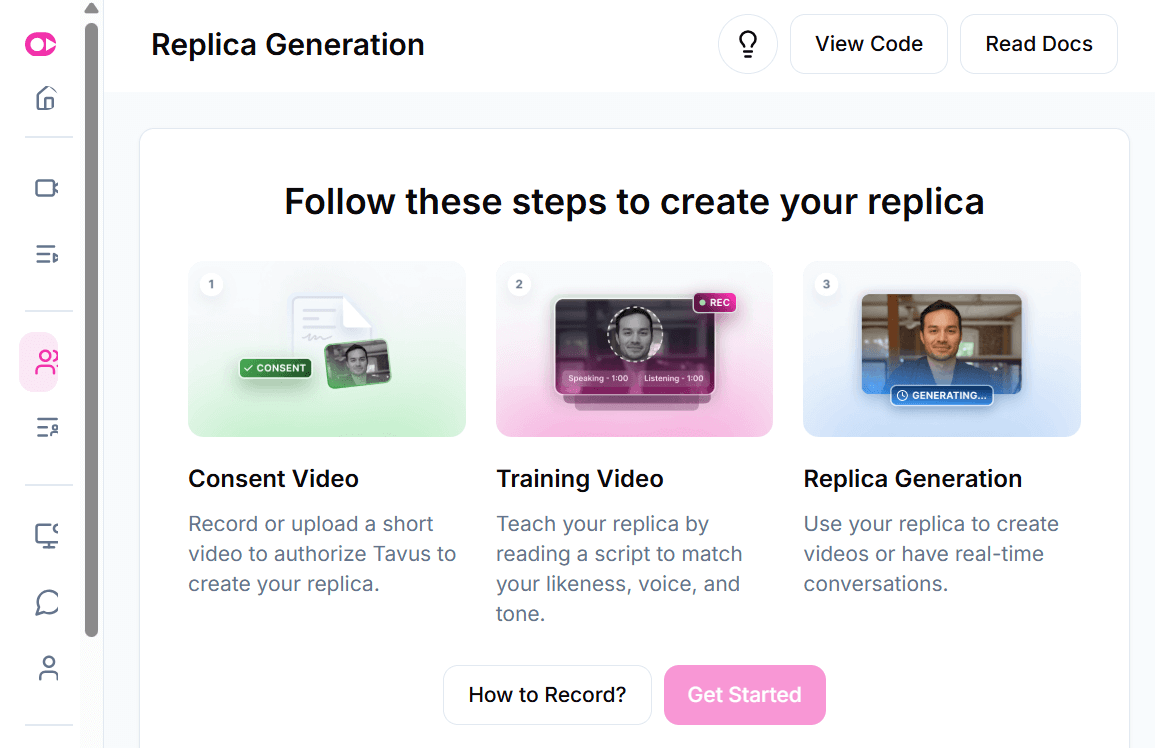
Tavus Vs HeyGen in Video Personalization
On the other hand, if you’re exploring a Heygen AI alternative, Tavus might be a perfect choice. It focuses on hyper-realistic avatars that replicate your facial expressions and voice, providing a deeper level of personalization in video creation.
As mentioned earlier, HeyGen’s AI avatars and text-to-speech technology allow you to create professional-looking videos without recording everything. Businesses can also upload details, and HeyGen makes unique videos for each recipient.
This platform works great with popular CRM systems like HubSpot, Zapier, and Salesforce. Plus, HeyGen can send videos out via email or SMS.
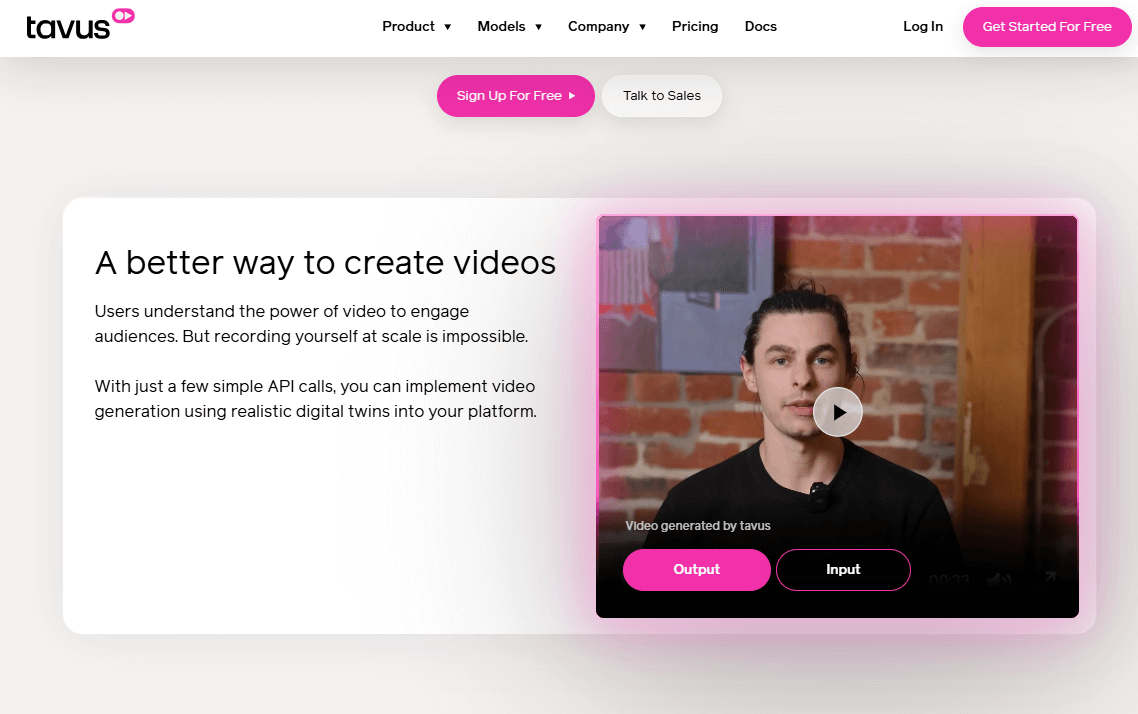
Tavus with APIs
How about Tavus? Well, this platform provides strong automation features. First, like HeyGen, it integrates well with marketing tools and CRMs. For instance, if someone leaves items in their shopping cart, Tavus can create a video where the salesperson personally addresses them by name. From this, they remind them to complete their purchase.
This platform also provides special landing pages for these videos, making the experience feel more branded and personal. So, this is a great option for engaging in connection with customers!
You may be interested in:
HeyGen vs Synthesia: Which AI Video Generator Wins in 2025?
HeyGen vs ElevenLabs: AI Voice Generator Battle
| Tavus | HeyGen | |
| Pros | ✅ Lifelike avatars that enhance viewer engagement.
✅ Keeps audio and visuals perfectly in sync for a natural feel. ✅ Capable of generating thousands of unique videos from a single recording. ✅ Allows live chats with avatars for a dynamic experience. ✅ APIs to integrate into existing systems |
✅ Easy for anyone to use, no tech skills required.
✅ Lots of ready-to-use templates for quick video creation. ✅ A wide range of voice samples and language support. ✅ APIs to integrate into existing systems |
| Cons | ❌ Its advanced features might be pricier for smaller businesses.
❌ Could face challenges if scaling for large deployments. |
❌ Avatars may not always reflect your unique brand.
❌ Some users feel the AI voices can sound a bit robotic. ❌ Some users find customization options restrictive. ❌ Some users reported slow support and long video processing times. |
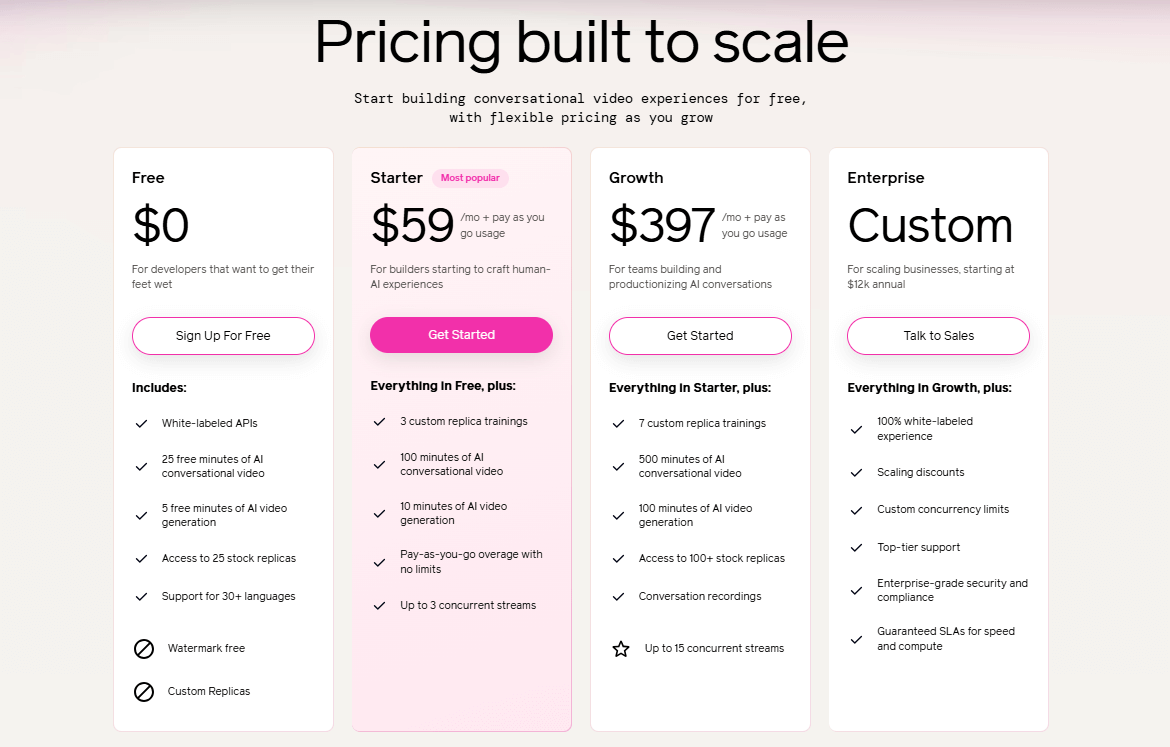
Pricing Plans of Tavus
Tavus offers AI-generated, hyper-personalized video solutions with four pricing tiers:

Pricing Plans of HeyGen
HeyGen provides AI avatar-based video generation with flexible plans:
As you might see, HeyGen is more affordable. However, while Tavus is ideal for enterprises, it offers a generous free plan for small teams to explore its features.
You may be interested in:
Colossyan vs HeyGen: Which is The Best AI Video-Generated?
Heygen vs D-ID: Finding The Best AI Video Creator in 2025
Choosing an AI video generator can be overwhelming with so many options available. Here’s a quick guide to help you find the right one:
Both Tavus vs HeyGen have unique strengths. HeyGen is excellent for those looking for straightforward, template-based video creation, while Tavus offers advanced, lifelike interactions for a more personalized experience. Your choice should depend on what you specifically need for your projects!
If you’re looking for an affordable option for fast AI video generation, HeyGen is a fantastic option. Thanks to its ready-made avatars, simple text-to-speech features, and support for multiple languages, HeyGen is great for creating content for marketing, education, or social media.
On the other hand, if you’re after something a bit more personalized, check out Tavus. This tool lets you create a digital version of yourself, with voice cloning and amazing lip-syncing. It’s perfect for businesses willing to spend money scaling personalized videos for sales and customer engagement.
Related Articles:
HeyGen Vs InVideo: Which is The Best AI Video Tool in 2025?

